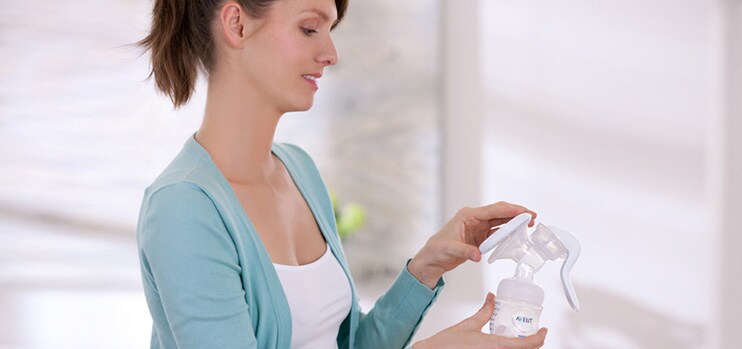Breast milk is the best nutrition for babies, and it’s recommended that your baby is fed on breast milk alone for the first six months. Here, you’ll find our useful breastfeeding tips for getting off to a great start.

Before your baby arrives, you might like to learn how breastfeeding works by going to a local class or a midwife’s workshop, so you feel more confident when the time comes. You can also talk to friends or family who have enjoyed breastfeeding, and ask your partner and family to be involved from the beginning so you have their support, too.
Breastfeeding is a skill that most mothers can manage quite easily, but sometimes it can take a while to find the best position for your baby on your breast. Being comfortable and finding a position you are happy with will make it easier for both you and your little one.
Sit up in bed, or in a comfortable chair that supports your back. Keep your knees slightly higher than your hips – you might need a footstool for this.
The under arm hold is a good choice if your breasts are very large, if you’ve had a caesarean delivery, or if you have twins.
The side-lying position allows you to lie down while breastfeeding, which means you can relax in bed whilst you feed.
Once you’ve found your most comfortable position, bring your baby to the breast, not the breast to the baby. Also, make sure that your baby is able to tip her head back slightly when feeding.
Your baby will take your nipple, areola (the areola is the darker skin around the nipple) and some of the surrounding tissue into her mouth, depending on the size of the areola. You’ll know your baby has successfully attached to your nipple if you can see more of the areola by their nose than by their chin.
Once properly attached, your baby will suckle quickly to stimulate the let-down reflex and then slow down as milk begins to flow.
Once you start making milk (2 to 5 days after birth) you should encourage your baby to feed on the first breast fully before offering the second side. This enables them to drink the rich hind-milk that will help them to settle and gain weight. Not all babies will continue to feed from the second breast, so let your baby decide.
Help your baby have a full feed by stimulating them if they become sleepy after just a short time. Try changing position, removing a layer of clothing or tickling them.
How long a feed lasts varies with each mother and baby – it can be anything between 10 and 40 minutes. It all depends on your baby's age, technique and your let-down reflex.
If your baby isn’t correctly attached to the breast, the milk won’t flow properly and your baby may not get enough milk. It won’t be comfortable for you either, as you could get swollen breasts if they’re too full of milk and sore nipples.
Soreness can be caused by your nipple being too close to the front of your baby’s mouth. The correct position is at the back, near his soft palate. If you find you’re continuing to struggle, ask your healthcare professional for advice.
Finally, if your baby seems happy and settled between feeds and is putting on weight at a steady rate, you can be assured your milk is flowing fine, and your breastfeeding is going well.
Please be aware that the information given in these articles is only intended as general advice and should in no way be taken as a substitute for professional medical advice. If you or your family or your child is suffering from symptoms or conditions which are severe or persistent or you need specific medical advice, please seek professional medical assistance. Philips Avent cannot be held responsible for any damages that result from the use of the information provided on this website.
Comfort Single electric breast pump
SCF332/01
Natural baby bottle
SCF693/17